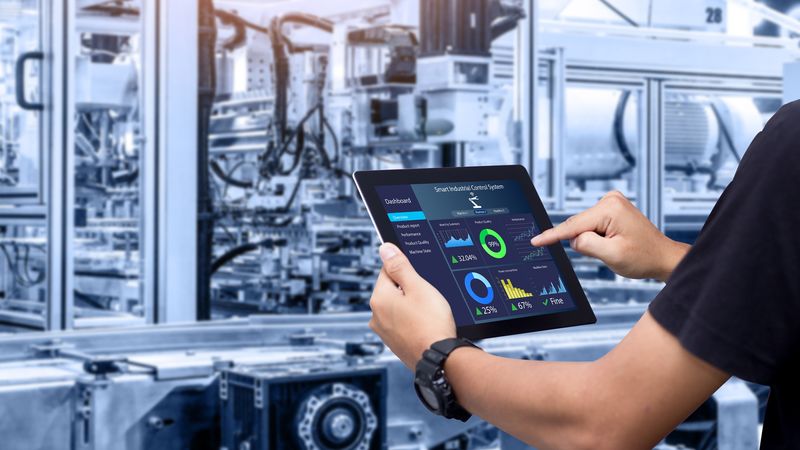Open or Proprietary? Pros and Cons to Consider for Industrial Networking
Industrial communication networks are crucial to optimize processes and production in interconnected factories – but the convergence of IT and OT brings interoperability and security challenges. In addressing these issues, do open standards and protocols drive or hinder innovation?

Now is the time to prepare for the integration of advanced wireless technologies and the growing importance of edge computing.
By Andrea Richetta, Principal product evangelist at Arduino
The advantages of open standards in industrial networks
Using open standards in industrial networks offers significant benefits, impacting efficiency, scalability, and operational security. The primary advantages include interoperability, cost reduction, and innovation stimulation.
Interoperability: Open standards facilitate communication and cooperation between devices and systems from different manufacturers. Arduino has always championed interoperability through open and inspectable systems, ensuring users have a clear understanding of system functionality.
Cost Reduction: Open standards and open-source solutions lower hardware and software acquisition costs and prevent vendor lock-in. Maintenance costs are often reduced as well. Finally, organizations can leverage diverse skills already present in their teams or easily find talent in the current job market: there are tens of thousands of professionals who have Arduino as one of their skills on LinkedIn!
Innovation Stimulation: Open standards promote innovation by allowing developers to focus on creating original solutions rather than solving compatibility issues. Enabling access to technology and fostering creativity is the first step towards genuine innovation.
The relevance of proprietary solutions
Despite the benefits of open standards, proprietary network solutions remain necessary in certain scenarios.
Legacy Systems: Many sectors have existing infrastructures based on proprietary technologies implemented years ago. In some cases, any kind of transition – including one to open standards – can require significant investment and be economically unfeasible.
However, even in a closed context, open-source products – like the system on modules (SOMs) in the Arduino Portenta family or ready-to-use solutions like Portenta Machine Control – can help innovate without disruption and drive the digital transition while maintaining legacy systems.
Performance and Speed: In high-speed automation, proprietary solutions can be optimized for maximum efficiency and minimal latency, which is crucial for performance-critical applications.
Controlled Environments: In organizations where production components are managed by a single entity, proprietary solutions can offer tighter control and better integration of processes and systems, enhancing operational optimization.
The future of industrial networking
The evolution of industrial networking includes the extension to wireless communication technologies such as Wi-Fi® 6 and 5G, which offer higher speeds, lower latency, and reliable connectivity in complex environments. Here are some topics to consider for any future-forward investment strategy.
AI/ML: The future of industrial networking will see the extensive integration of artificial intelligence and machine learning to enhance network performance, security, and efficiency. AI-driven network predictive maintenance will become the norm, with networks self-diagnosing and addressing potential issues before they escalate, therefore minimizing downtime.
Focus on Cybersecurity and Privacy: As industrial networks become more interconnected and complex, the focus on cybersecurity and data privacy will increase. We see it today in the EU Cybersecurity Act, and soon industrial networking solutions will need to incorporate advanced encryption techniques, decentralized security protocols, and other technologies to safeguard sensitive information and ensure data integrity.
Integration Challenges: Companies must address integration complexities related to security, reliability, and adoption timelines, rather than focusing solely on the technological aspects.
Wired Connections: Technologies like T1S can mitigate electromagnetic interference issues and reduce adoption costs over time.
IIoT and Edge Computing: The Industrial Internet of Things (IIoT) will continue to drive innovation with smarter sensors and connected devices. Edge computing will become essential for processing data near the source, reducing latency, and optimizing data transfer by exchanging information only when necessary.
Open solutions like the Arduino Opta micro PLC are ready for this future: security on the edge and capable computational power help drive innovation, from simple tasks to complex scenarios, always granting full control over equipment.
All in all, while proprietary solutions still have their place in specific contexts, open standards and open-source solutions offer numerous benefits. No matter what the best strategy is for your business, now is the time to prepare for the integration of advanced wireless technologies and the growing importance of edge computing, driving continuous innovation and efficiency improvements.